It is acknowledged that others broaden our views in how we see things. Museum and art galleries today invite external curators to expand, refresh their narratives and give new voices to their programming. The same also happens in Follow the Rabbit (Taking stock of a collection and its reception through contemporary Chinese art) at Museum Liaunig. The director of the museum Peter Liaunig, visionary and son of the collector couple Herbert & Eva Liaunig has so invited Alexandra Grimmer. The outcome is not only some never before in Austria shown positions of Chinese contemporary art, but also revised narratives about existing works from the collection.

Exhibition view from Follow the Rabbit (Taking stock of a collection and its reception through contemporary Chinese art) at Museum Liaunig, 2023, courtesy of Museum Liaunig
The museum is located in the Carinthia Region, next to the Slovenian border – with its trailblazing architecture facing river Drau, the building is now one of the youngest architectures under monumental preservation. Among other aspects, the collection focuses on Austrian Modern and Contemporary art, encompassing not only internationally recognized names but also overlooked, forgotten positions that definitely earn to be brought into the spotlight. The chosen works vary in format – drawing, painting, installation, sculpture, and photography.
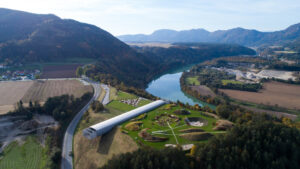
Museum Liaunig, photo courtesy of Museum Liaunig
Alexandra Grimmer, independent curator, widely known for her expertise in Chinese contemporary art, is chosen to curate this monumental show. But how emerged this love of her? After graduating from Paris, living in Berlin, Chicago, Zurich, Munich, and working in various leading art galleries, one day, she fell in love with China. It is on these streets and in many artists ateliers where she learned to speak the language and as well to read the art. Does she define herself as only a curator? “More like an accomplice to the artists”, she says. Also in the most challenging moments of the pandemic, she has not been scared to visit the country, becoming so also an expert of long quarantines. The majority of the loans for this exhibition are thanks to Blue Mountain Art Collection, a Vienna-based private collection. The mission of Ofer Levin, his team and Grimmer is to bring closer to the world the zeitgeist of Chinese contemporary art. In this frame, BMCA conducts residencies, solo and group exhibitions and special publishing projects.

Zhai Liang, Drink hot chocolate and float, 2022, Wang Yifan, Jeff Holding a Broken Wheel, 2019, courtesy Museum Liaunig
Also for Follow the Rabbit (Taking stock of a collection and its reception through contemporary Chinese art), an important catalogue has been created. Here we read background stories of works and gain so also for the Austrian contemporary art positions a new light, a new gaze. The exhibition takes place in the largest museum hall, and consists of 155 works by around 100 artists, where two-thirds are from Austria. These works are set in a completely free dialogue, they are left to talk about themselves and not juxtapose each other.
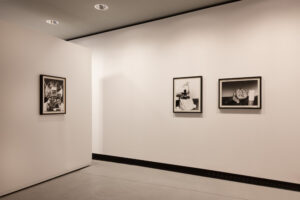
Birdhead, Welcome to Birdhead World Again, 2018. Exhibition View at Museum Liaunig, 2023, courtesy Birdhead & Museum Liaunig
That’s what I reckon when I see the massive work by Meina Schellander for example, entitled RAUM OMEGA: Ruhe sanft – du blaues Land (Room Omega: Rest gently – you blue land) from 1999, which resembles a temple and recount to the viewer strong narratives of the politics of Carinthia from those years. The work consists of twelve aluminium cone points (filled with black synthetic fibres), a vast blue-coloured egg and a title all around the sculpture. Another intense sculptural work is Fat Cars, 2004, by Erwin Wurm, an artist recognised for employing in his sculptures two techniques while depicting his observations regarding Austrian society – blowing up (exaggerating the real sizes) and sometimes diminishing. Then we have two works by Kiki Kogelnik, who always saw herself as an international artist and introduced to the world, even at New York, new brand materials such as plastic cling film.
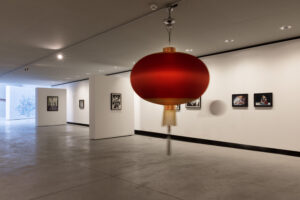
Exhibition view from Follow the Rabbit (Taking stock of a collection and its reception through contemporary Chinese art) at Museum Liaunig, 2023, courtesy of Museum Liaunig
All these artistic positions make you understand how rich and diverse contemporary art is. But it’s not an easy mission to write about all these positions – Arnolf Rainer, Herbert Brandl, Bruno Gironcoli, Maria Lassnig, Franco Kappl, Suse Krawagna, Peter Krawagna, Peter Pongartz, and also striking new positions such as Alfredo Barsuglia. The hilarious thing about this exhibition is that in some of the works one thinks that they are by artists from China, but when you take a closer look at the museum’s signage, you understand that they are actually that of Austrian artists. As the curator and museum director says, the world of artists has long been freed from borders. So, we see references that bring us from Chinese provinces, to metropolises, to Austria, and then to times in South America where ice cubes were not existing yet (see Zhai Liang, Drink Hot Chocolate and Float, 2022).
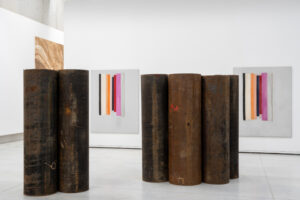
Zhang Enli, Dark Brown, 2014. Ma Jia, untitled, 2020. Suse Krawagna, untitled, 2009. Suse Kra-wagna, untitled, 2009, courtesy Museum Liaunig
Then there is a plethora of Chinese artists and works to be discovered. Some of them living and being scattered all around China, some being based in different places of Europe. Among them – Ma Jia, an artist born in 1981, who makes monumental works in painting and sculpture. For this show, a work built from various 200 cm pipes has been chosen. Time and history of objects are her focus. Living traces from past who have the power to influence the contemporary, the now. Then Ma Jun – he plays with the image of China in Europe. Part of Follow the Rabbit is also a huge porcelain car, with excellent decoration. You wonder how they have managed to bring it here.
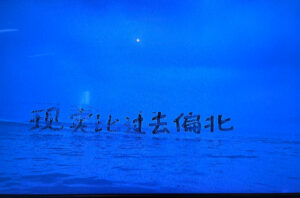
Dong Wensheng, Detail, 2012, courtesy of the artist, Museum Liaunig
Then two quite large formats works by Chen Yujun attract my attention. Born in 1976 in the Fujian Province, China the artists show us in the form of collage pieces memories or disappeared memories from his childhood. Often in China, because of urban “development” humans can not ‘re-find’ anymore places of their childhood, so says Grimmer during the curatorial talk. Then we have duo Birdhead, Cai Dongdong and many other positions which you could discover through your visit. This exhibition needs time as each work introduces us to a new brave word of understanding – Society, Past, Memories, building and demolishment of buildings, colonialism, migration and immigration, Zeitgeist. The exhibition’s title therefore “Follow the Rabitt” stays true to the pledge/promise. Here is a hole, and you can fade into discoveries. An entire courageous new world and a lot of learning and new understandings about Austrian and Chinese contemporary art.
Erka Shalari
Info:
Follow the Rabbit (Taking stock of a collection and its reception through contemporary Chinese art)
30/04/2023 – 29.10.2023
Museum Liaunig
9155 Neuhaus 41, Austria
Wed–Sun, 10.00. – 18.00
www.museumliaunig.at/en
*A complete list of participating artists and works featured in this exhibition can be seen whether at Museum Liaunig Website or at BMCA Website
–––––––––––––––––
Erka Shalari is an independent art writer and curator. She lives and works between Vienna and Italy.
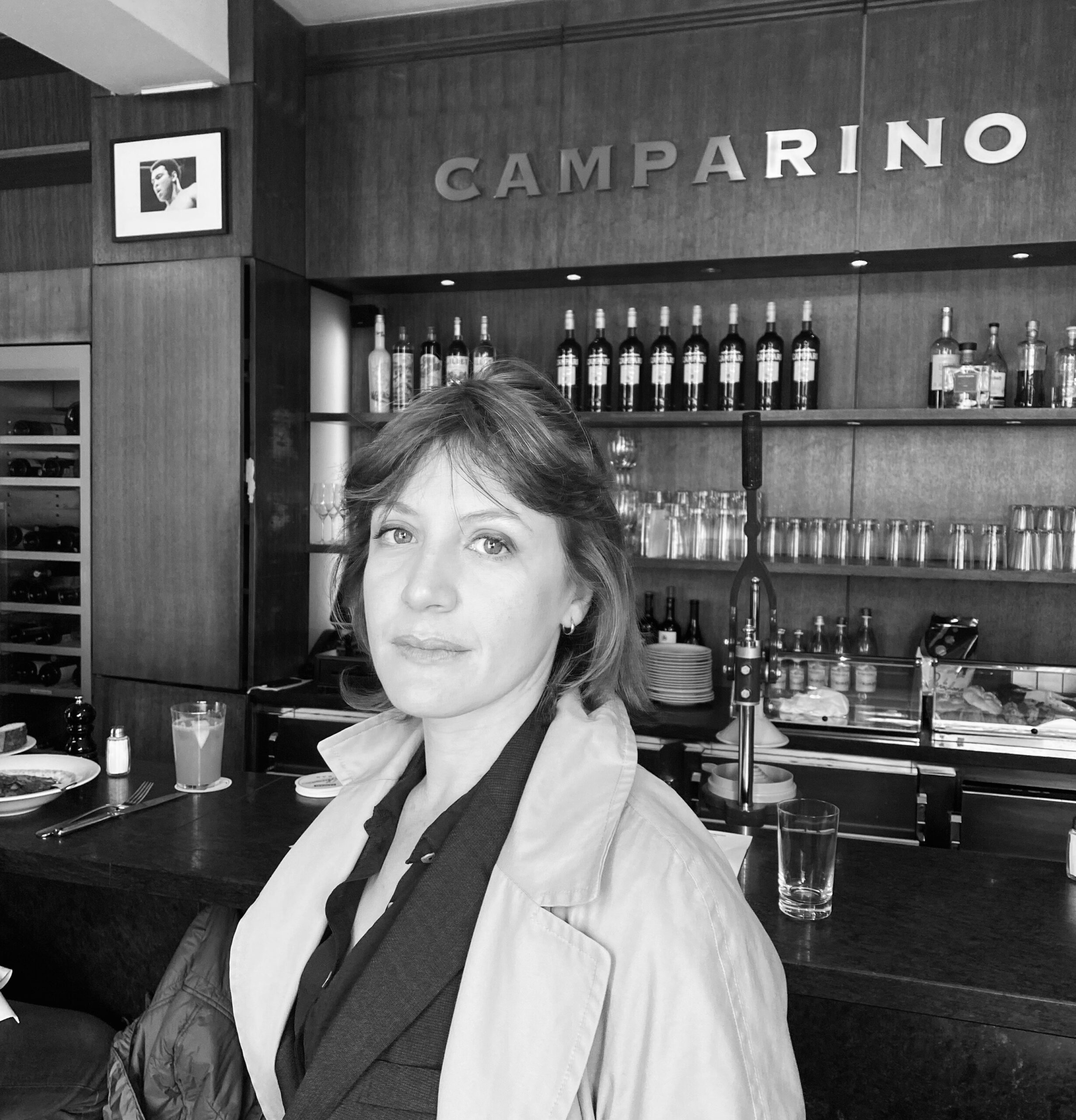
Erka Shalari is a Vienna based art writer and editor. Her work is committed to uncovering distinctive artistic positions in contemporary art. The work methodology is strongly influenced by psychology, epistemological works, as well as affects and rituals.




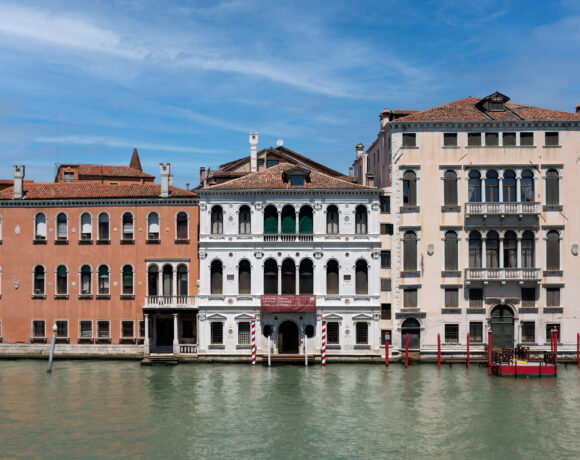

NO COMMENT